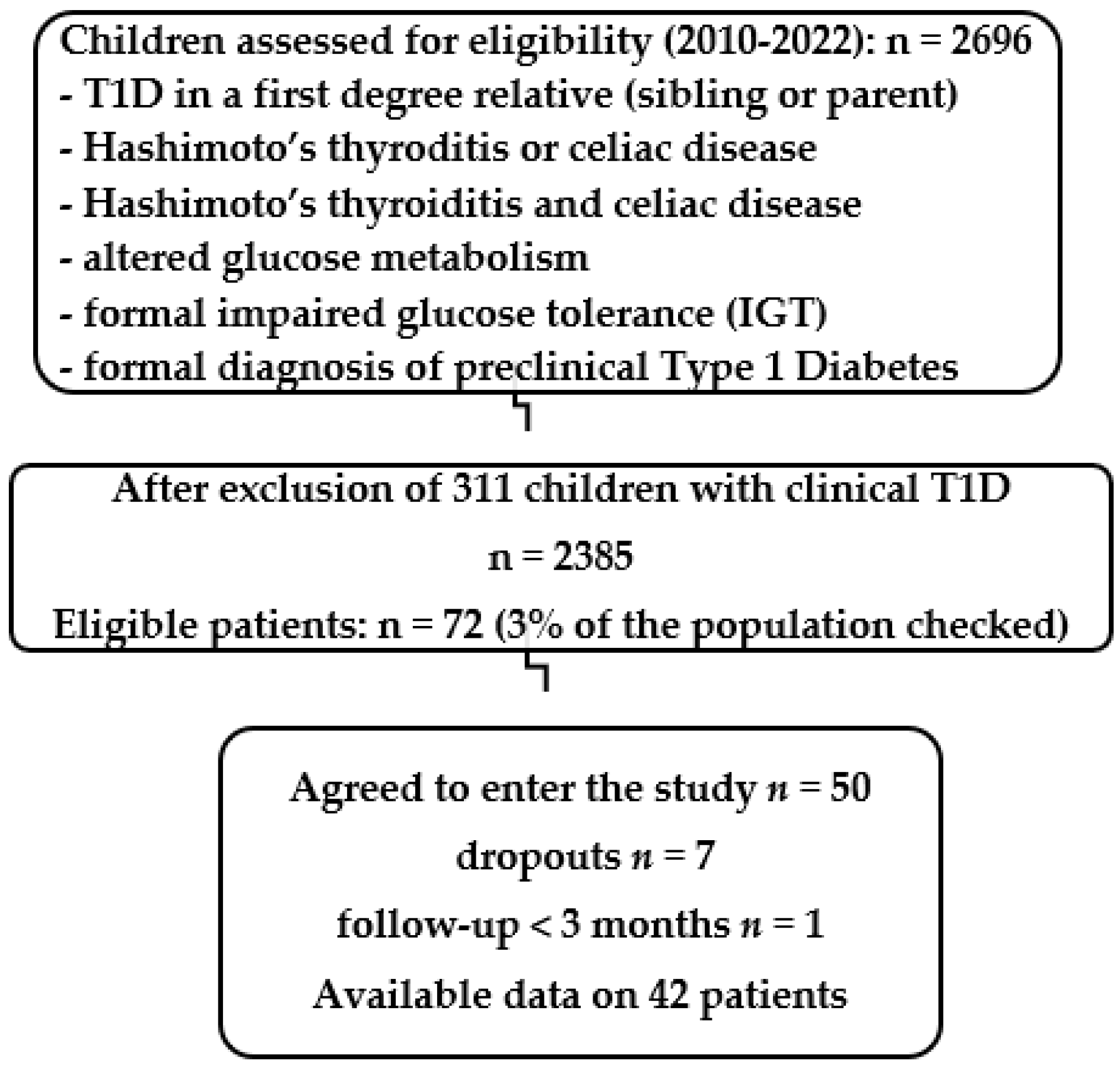How Should People with Celiac Disease Prepare a Disaster Kit? Essential Gluten-Free Staples to Stock Up On
When disaster strikes, individuals with celiac disease face unique challenges that require specific preparation to ensure their dietary needs are met. Understanding how should people with celiac disease prepare a disaster kit? becomes essential, as traditional emergency supplies often lack the gluten-free options necessary for safe consumption. In this blog post, we will delve into the importance of Celiac Disease disaster preparedness and guide you through assembling a comprehensive gluten-free emergency kit. By focusing on crucial Celiac disease survival kit essentials, we will help you feel empowered and ready to tackle any situation, ensuring that you maintain a safe and healthy diet even in the face of adversity.
Understanding Celiac Disease and Its Challenges During Disasters
Celiac disease is an autoimmune disorder triggered by the ingestion of gluten, a protein found in wheat, barley, and rye. For individuals diagnosed with this condition, consuming even a tiny amount of gluten can lead to severe health complications, making disaster preparedness a critical topic. When emergencies strike, guaranteed access to safe and gluten-free food is not always a given, which can pose significant challenges.
Key Challenges Faced:
| Challenge | Explanation |
|---|---|
| Inaccessibility to Gluten-Free Foods | Supermarket shelves may be sparse, and gluten-free options can diminish quickly during disasters. |
| Limited Awareness Among Relief Workers | Many emergency personnel may not fully understand celiac disease and the importance of providing gluten-free options. |
| Anxiety About Food Safety | The stress of a disaster often exacerbates anxiety over dietary restrictions, making it vital to have a plan in place. |
| Potential Cross-Contamination | In chaotic situations, cross-contamination with gluten-containing foods can occur, leading to serious health risks. |
Given these challenges, individuals with celiac disease must anticipate scenarios where food supply may be compromised. How Should People with Celiac Disease Prepare a Disaster Kit? Establishing a Celiac Disease Survival Kit Essentials is imperative to ensure safety and peace of mind.
To effectively address these issues, it’s vital to recognize the importance of having a gluten-free emergency kit readily available. This kit should include non-perishable food items, safe cooking supplies, and emergency resources that cater specifically to gluten-free needs, thus empowering those with celiac disease to navigate crises confidently and securely.
Why Disaster Preparedness is Crucial for Individuals with Celiac Disease
Disaster preparedness is especially vital for individuals diagnosed with Celiac Disease, as environmental or uncontrollable situations can severely impact their access to safe food. In an emergency, those affected by this autoimmune disorder must ensure that they have reliable, gluten-free options readily available. Below are key reasons highlighting the significance of Celiac Disease Disaster Preparedness:
| Reason | Explanation |
|---|---|
| Avoiding Cross-Contamination | During disasters, food sources can become compromised. Well-prepared kits help avoid accidental gluten exposure. |
| Emergency Food Supply | Lack of access to gluten-free foods can lead to severe health complications. A Gluten-Free Emergency Kit ensures that individuals have safe meals available. |
| Peace of Mind | Knowing that you have a plan in place allows for a greater sense of security and readiness, enabling better focus on other emergency management tasks. |
| Health and Well-being | Maintaining a gluten-free diet is essential for managing Celiac Disease symptoms. Preparedness helps avoid unnecessary sickness or hospital visits. |
| Special Dietary Needs | Many conventional emergency supplies may not cater to gluten-free diets. Customizing a Celiac Disease Survival Kit Essentials ensures that your unique needs are met in any situation. |
In summary, being prepared can significantly mitigate the unique challenges faced by those with Celiac Disease during disasters. Having a structured plan not only safeguards against potential gluten exposure but also promotes overall well-being. Hence, understanding how should people with Celiac Disease prepare a disaster kit is paramount in ensuring both safety and health during unforeseen circumstances.
Essential Gluten-Free Staples for Your Emergency Kit
Having a Celiac Disease Survival Kit Essentials is vital for individuals living with celiac disease, particularly during emergencies. When disaster strikes, ensuring access to gluten-free food is crucial to avoid adverse health effects. Here are some essential gluten-free staples to include in your emergency kit:
Non-Perishable Foods
- Canned Goods: Opt for canned vegetables, beans, and meats labeled gluten-free.
- Rice and Quinoa: These grains are great sources of carbohydrates that are naturally gluten-free.
- Gluten-Free Pasta: Stock up on gluten-free pasta varieties for quick meals.
- Nut Butters: Peanut, almond, or cashew butter makes for nutritious snacks.
Snacks and Extras
- Gluten-Free Granola Bars: Perfect for a quick energy boost, look for bars that specifically state gluten-free.
- Trail Mix: Choose blends that contain gluten-free nuts, seeds, and dried fruits.
- Dried Fruits: Raisins, apricots, and cranberries can sweeten up your rations.
Drinks
- Gluten-Free Beverages: Ensure you have options like herbal teas, coconut water, and 100% fruit juices.
Quotation
“In times of disaster, food insecurity can jeopardize health outcomes for those with celiac disease. Preparing in advance is essential.”
Storage and Accessibility
When creating your Gluten-Free Emergency Kit, consider the storage conditions in your area. Keep the food in a cool, dry place, and make sure to label everything clearly to avoid any mix-ups. Regularly check expiration dates and rotate items as necessary to maintain freshness.
By thinking ahead and stocking these essential gluten-free staples, you can be better prepared for unexpected situations while managing your dietary needs effectively. This proactive approach can significantly ease stress during emergencies, allowing you to focus on safety and recovery.
Creating a Gluten-Free Emergency Kit: Key Components
When it comes to How Should People with Celiac Disease Prepare a Disaster Kit?, having a well-structured plan is vital. A Celiac Disease Survival Kit Essentials goes beyond traditional supplies, focusing on gluten-free items to ensure safety and health during crises. Here are the key components to include in your gluten-free emergency kit:
| Component | Description |
|---|---|
| Non-Perishable Foods | Stock items like canned beans, tuna, and gluten-free pasta. |
| Snacks | Choose gluten-free granola bars, nut mixes, and dried fruits. |
| Water and Hydration | Include at least one gallon of water per person per day for three days. |
| Medical Supplies | Pack any necessary medications, along with allergy and medical information. |
| Cooking Essentials | Have a portable stove or camp tools for safe food preparation. |
| Personal Hygiene Items | Don’t forget soap, wipes, and sanitary products to maintain hygiene. |
| Important Documents | Include copies of identification, insurance, and celiac documentation. |
| Comfort Items | Add items such as a favorite book or photos to provide emotional support. |
By organizing your Gluten-Free Emergency Kit, you can ensure you have all the essentials required during emergencies. Celiac Disease Disaster Preparedness requires anticipation and mindfulness about food safety. Thus, always check expiration dates and plan regular rotations of your supplies.
To reinforce, here are some tips for creating your gluten-free emergency kit:
- Plan Ahead: Assess your individual dietary needs and prepare accordingly.
- Stay Informed: Keep up-to-date with local emergency procedures and resources.
- Practice: Conduct a mock emergency to understand how to access your kit swiftly.
By taking these proactive steps, you can enhance your safety and confidence during unforeseen circumstances while being mindful of your dietary restrictions.
How to Safely Store and Rotate Your Gluten-Free Supplies
Proper storage and regular rotation of gluten-free supplies are essential for those preparing a Celiac Disease Survival Kit Essentials. Maintaining the freshness and safety of gluten-free products will ensure that you are well-prepared during emergencies. Here are key strategies to help you effectively store and rotate your gluten-free supplies:
Storage Tips
- Cool, Dry Place: Store gluten-free products in a cool, dry location, away from moisture and heat. A pantry or cupboard works best.
- Use Airtight Containers: Transfer opened packages into airtight containers to prevent contamination and maintain freshness.
- Label Everything: Clearly label your containers with contents and expiration dates for easy identification and to help you track freshness.
Rotation Guidelines
To ensure you maximize the shelf life of your gluten-free items, consider the following rotation techniques:
| Item Type | Storage Duration | Rotation Frequency |
|---|---|---|
| Canned Goods | 2-5 years | Every 6 months |
| Dried Grains | 1-2 years | Every 6 months |
| Snacks & Baked Goods | 6-12 months | Every 3 months |
| Packaged Meals | 12-24 months | Every 12 months |
Additional Considerations
- Inventory Check: Regularly review your Gluten-Free Emergency Kit for expired items or those in need of replenishment.
- Know Your Brands: Familiarize yourself with gluten-free brands that suit your tastes, as preferences can affect your food supply decisions.
By understanding how should people with celiac disease prepare a disaster kit, you can confidently ensure that your gluten-free supplies remain safe, nutritious, and ready to use when it matters most. Finally, remember to share this knowledge with family members or emergency responders to assist in your overall disaster preparedness.
Planning for Special Dietary Needs in Emergency Situations
When disaster strikes, having a well-thought-out plan is crucial, especially for individuals with celiac disease. Managing dietary restrictions during emergencies requires proactive measures to ensure your health and safety.
“A well-stocked emergency kit not only includes food but must also consider the unique needs of those with celiac disease.”
Key Considerations
Understand Your Needs: People with celiac disease cannot consume gluten, which is found in wheat, barley, and rye. It’s essential to have a clear understanding of your dietary requirements during emergencies.
Gluten-Free Emergency Kit: Prepare a gluten-free emergency kit that includes:
- Canned goods (check labels for gluten-free options)
- Packaged snacks (ensure proper labeling)
- Dried fruits and nuts (great sources of energy)
Special Dietary Supplements: Consider including gluten-free vitamins and supplements in your kit to maintain your nutritional needs.
Resources to Consider
Local Relief Agencies: Many organizations provide resources for those with specialized dietary needs during emergencies. They understand the unique challenges of food accessibility.
Family and Friends: Inform your support network about your dietary needs. They can assist in your preparedness efforts and help ensure you have gluten-free options available.
Online Resources: Websites dedicated to celiac disease offer checklists and tips for Celiac Disease Disaster Preparedness. Leverage these tools to tailor your kit effectively.
Emergency Communication
- Emergency Contact Card: Include a card listing your dietary restrictions and any medications related to celiac disease. This card can be shared with emergency responders.
By following these guidelines for Celiac Disease Survival Kit Essentials, you can create a comprehensive plan that caters to your gluten-free needs during an emergency. Prepare today to ensure peace of mind in uncertain times!
Resources and Support for Celiac Disease Disaster Preparedness
When it comes to preparing for emergencies, having reliable Celiac Disease disaster preparedness resources is invaluable. Individuals with celiac disease must ensure they have access to information and support systems that cater to their specific dietary needs. Here are key resources where people with celiac can find guidance and assistance:
1. Celiac Disease Organizations
- Celiac Disease Foundation: Offers educational materials and emergency resources specifically tailored for those with celiac disease.
- National Foundation for Celiac Awareness: Provides extensive information on maintaining a gluten-free lifestyle, especially in emergencies.
2. Online Communities and Support Groups
- Facebook Groups and Forums: Join online communities where individuals share tips on how should people with celiac disease prepare a disaster kit? These platforms often have real-time advice and experiences shared by others.
- Meetup Groups: Local gatherings can connect you with individuals facing similar challenges and can help you share local resources.
3. Emergency Management Websites
- Ready.gov: Offers broad disaster preparedness information that can be customized for gluten-free needs by incorporating tips for stocking up on gluten-free food items.
4. Gluten-Free Product Lists
- Many organizations publish comprehensive lists of gluten-free products, including those suitable for emergencies. Stocking your gluten-free emergency kit with these items can ensure safety during stressful situations.
5. Blogs and Vlogs
- Follow celiac disease advocates and health professionals who share valuable insights and personal experiences related to Celiac Disease survival kit essentials.
Quick Reference Table:
| Resource Type | Examples |
|---|---|
| Celiac Organizations | Celiac Disease Foundation, NFCA |
| Online Communities | Facebook groups, health forums |
| Emergency Websites | Ready.gov |
| Gluten-Free Product Lists | Organization lists, personal blogs |
| Blogs/Vlogs | Celiac advocates sharing tips and experiences |
In conclusion, having access to reliable Celiac Disease disaster preparedness resources enables individuals to stay informed and proactive. By utilizing these tools and communities, those living with celiac disease can create a comprehensive gluten-free emergency kit and ensure that they are prepared for any unforeseen circumstances.

Frequently Asked Questions
What are gluten-free staples that should be included in a disaster kit for individuals with celiac disease?
Individuals with celiac disease should stock up on gluten-free staples such as rice, quinoa, gluten-free pasta, canned beans, and various gluten-free grains. Additionally, it’s essential to include gluten-free snacks such as popcorn, nuts, and dried fruits. It’s also wise to have a selection of gluten-free flours for baking and a few instant gluten-free meals or soups to minimize cooking during emergencies.
How can I ensure that the food I include in my disaster kit is truly gluten-free?
To ensure that the food included in your disaster kit is truly gluten-free, always check for certified gluten-free labels on packaging. Familiarize yourself with brands that have a good reputation for gluten-free products, and avoid items that may have cross-contamination risks. Additionally, read ingredient lists carefully and opt for whole foods like dried fruits, beans, and grains that are naturally gluten-free.
What other non-food items should be included in a disaster kit for those with celiac disease?
In addition to gluten-free food supplies, a disaster kit for individuals with celiac disease should include items such as gluten-free cooking utensils, food storage containers, labels for identification, and necessary medications. It’s also beneficial to include items like soap, disinfectants, and hand sanitizer to maintain hygiene during a crisis, alongside copies of important medical documents related to celiac disease.
How often should I check and update my disaster kit’s contents?
It is advisable to check and update your disaster kit at least every six months. This ensures that food items remain within their expiration dates, and you can replace any perishable items. During each check, review and refresh your inventory of gluten-free products, add any new essential items you discover, and adjust the kit according to any changes in your dietary needs or preferences.


